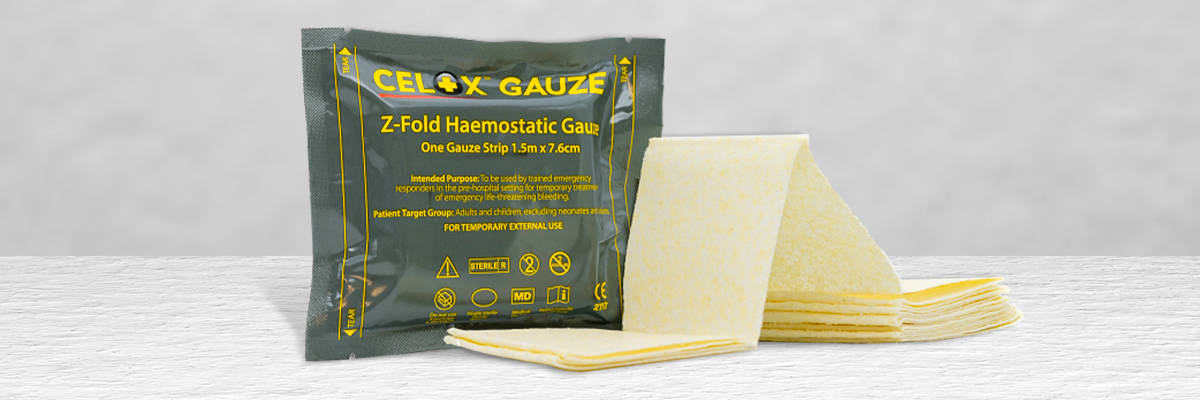
Major blood loss accounts for 40% of deaths after traumatic injuries. That’s why every trauma response kit should carry life-saving haemostatic dressings. These important first aid items treat catastrophic bleeds by speeding up the clotting process, thereby reducing blood-flow from deep wounds.
What is a haemostatic dressing?

While haemostatic dressings are similar to normal first aid dressings and serve the same purpose, they use a special chemical process to jumpstart the clotting process, slowing bleeds and making wound healing more efficient. Haemostatic treatment is available as loose haemostatic granules or impregnated into a haemostatic dressing, with the dressings being the recommended option for first aid.
Haemostatic treatments should never be allowed to enter:
- A patient's airway or chest
- A patient's eyes
- Any serious head injury which exposes brain tissue
How do haemostatic dressings work?
There are three main types of haemostatic agents, and each works slightly differently. These are as follows:Mucoadhesive agents
These kinds of haemostatic agents work by sticking directly to the damaged tissue to physically seal open wounds and stop bleeding – this is how our haemostatic agents work. More specifically, they use a naturally occurring biomolecule derived from shellfish called chitosan, which promotes blood coagulation.Procoagulants
These haemostatic agents work in a similar manner to mucoadhesive agents but use a mineral-based compound to promote blood coagulation.
Factor concentrators
These kinds of haemostatic agents work by absorbing water content from the bleeding wound, thereby increasing the concentration of the blood’s natural clotting agents.How to use haemostatic dressings
Wounds with severe bleeding should be treated primarily by applying pressure to the area, and this is still true with haemostatic dressings. To use haemostatic dressings properly, identify the wound’s point of bleeding and remove any pooled blood with plain gauze swabs or a similar absorbent material.If the wound is shallow: Apply the haemostatic dressing directly to the wound and hold it firmly in place, applying pressure. Check for bleeding around the dressing while maintaining pressure, then secure the haemostatic dressing in place with a bandage or pressure dressing.
If the wound is deep: Pack the wound with haemostatic dressings or press the haemostatic pad as deep as you can into the wound before securing it in place with a bandage or pressure dressing. Haemostatic agents work best when they are in direct contact with the source of bleeding.
Make a note that a haemostatic dressing has been used and keep the dressing’s packaging on hand for the emergency medical services.
When should you use haemostatic dressings?
Haemostatic dressings should be used only on heavily bleeding wounds where direct pressure with a normal dressing or pressure dressing has failed to stop bleeding. They should not be used on head or chest wounds, as blood flow around the brain and heart should never be interfered with.An important part of trauma first aid kits
Haemostatic dressings can save lives in the event of a catastrophe and are therefore highly recommended as part of any complete trauma first aid kit.Read our other blogs for more information on first aid or contact us for further advice and information on our products.
About the author:
Jo Stokes is a writer, marketer and trained first aider at First Aid Online.
Find out more about Jo.
By Jo Stokes

